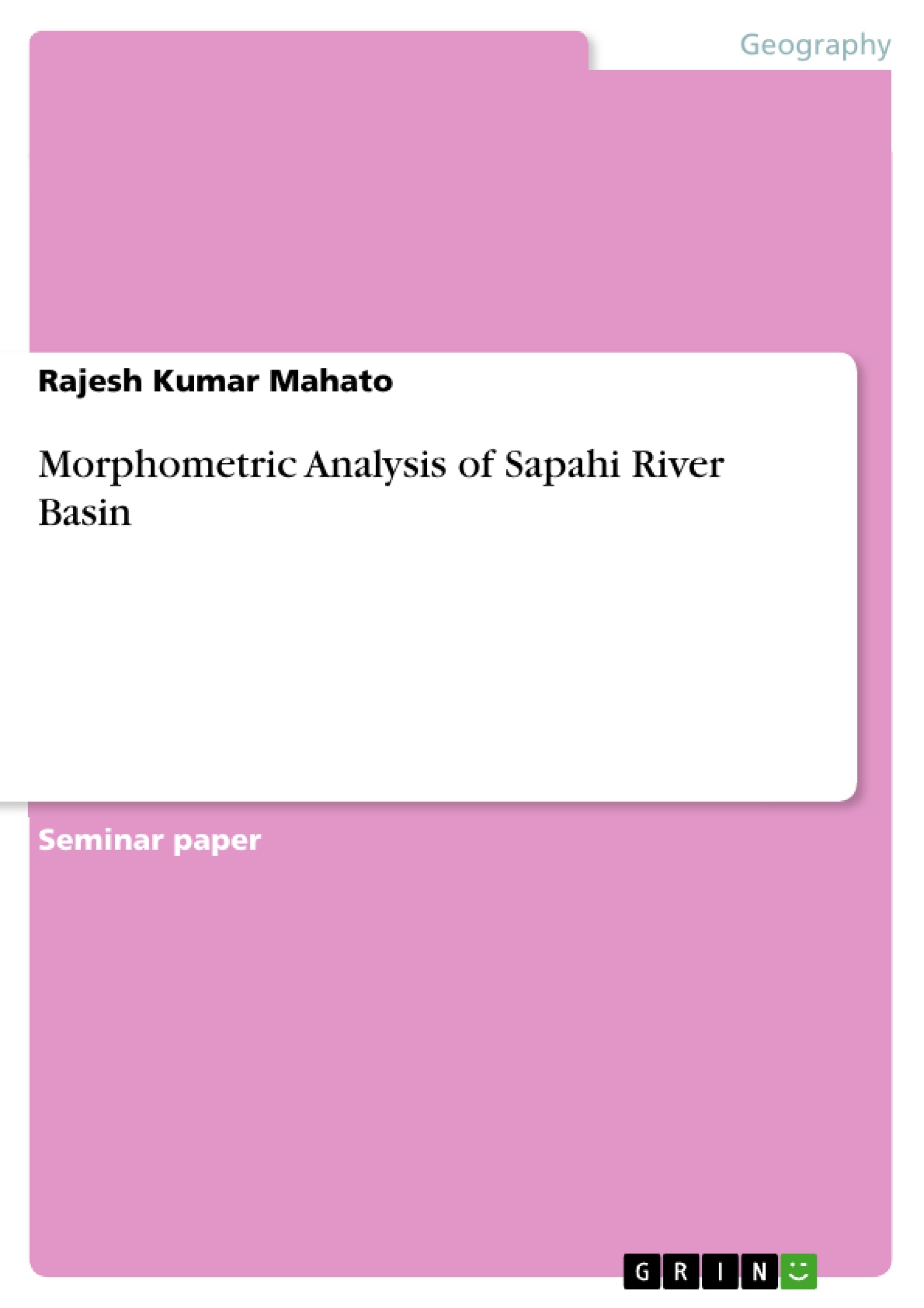Sapahi river is a very small tributary of river Swarnrekha river system. It’s just 15 km far away from main capital and functional region of Ranchi. In the lower portion of river Sapahi, Rukka dam is major water reservoir for water supply in Ranchi capital. The case study considered as try to prove river’s natural behavior. Thus it is a macro level field based research, there is very less possibility to acquire micro level field data. River rises from the up land of the northwest, area characterized by rocky explore and mainly forest with Sal. In monsoon season, river gives huge water mass, where as in winter it converts in a small stream. River deposits alluvial materials each year in maximum fluvial year. River morphometry and their related characteristics such as channel morphometry, drainage density and basin configuration are try to represent through different data and real environment calculation.
This paper is considered to explore some specific characteristics of very small river system, that how Sapahi river system behaving with their surface configuration.
Table of Contents
- RESEARCH METHODOLOGY
- HYPOTHESIS
- INTRODUCTION
- LOCATION OF SAPAHI RIVER IN JHARKHAND
- AREA
- LOCATION OF THE STUDY
- MORPHOMETRIC ANALYSIS
- LINEAR ASPECTS OF THE BASIN
- STREAM ORDERING
- BIFURCATION RATIO (Rb)
- LAW OF STREAM NUMBERS
Objectives and Key Themes
This research paper investigates the morphometric characteristics of the Sapahi River basin, a small tributary of the Subarnrekha River system in Jharkhand, India. The study aims to analyze the river's behavior, particularly its response to seasonal variations, lithological characteristics, and surface configuration. The objective is to understand how these factors influence the basin's morphometry, including its drainage patterns, channel geometry, and overall configuration.
- Analyzing the seasonal variations in charging and discharge within the Sapahi River basin.
- Investigating the impact of lithological characteristics on the degradational behavior of the basin.
- Exploring the relationship between basin morphometry and the configuration of the surface, specifically focusing on runoff characteristics.
- Examining the river's channel morphometry and drainage density to understand its surface configuration and behavior.
- Analyzing the bifurcation ratio, hypsometric curves, and clinographic patterns within the Sapahi River basin.
Chapter Summaries
The research begins with a detailed description of the Sapahi River basin, including its location, size, and geographical characteristics. The research methodology employs a three-tier approach, encompassing image interpretation, intensive field surveys, and laboratory investigations. The paper then delves into the morphometric analysis of the basin, examining linear aspects such as stream ordering, bifurcation ratio, and the law of stream numbers. The analysis focuses on understanding the relationship between these factors and the basin's configuration and behavior. The study utilizes various geospatial techniques and fieldwork to collect and analyze data. The paper also discusses the significance of the Sapahi River as a source of water for the surrounding communities.
Keywords
This research focuses on morphometric analysis, river behavior, seasonal variations, lithological characteristics, surface configuration, bifurcation ratio, drainage density, hypsometric curves, channel geometry, and stream ordering.
- Quote paper
- Rajesh Kumar Mahato (Author), 2009, Morphometric Analysis of Sapahi River Basin, Munich, GRIN Verlag, https://www.grin.com/document/205630



